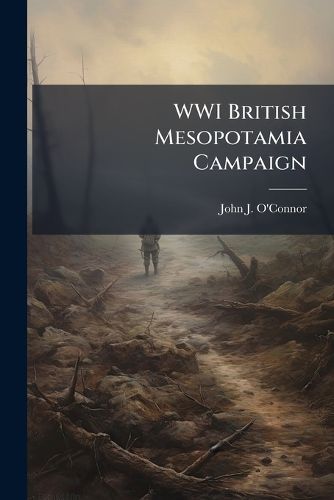Readings Newsletter
Become a Readings Member to make your shopping experience even easier.
Sign in or sign up for free!
You’re not far away from qualifying for FREE standard shipping within Australia
You’ve qualified for FREE standard shipping within Australia
The cart is loading…






In May 2003, US Navy Seabees held a somber ceremony at a British military cemetery in Al Kut, Iraq where they turned over 420 graves to the British government. The graves contained the remains of World War I British and Indian soldiers who died while fighting the Ottoman Turks at Al Kut during the British Mesopotamian Campaign. The British War Graves Commission had maintained the cemetery for decades until 1991, when Great Britain joined the US in Operation DESERT STORM. In retaliation for that participation, Saddam Hussein's Baath regime desecrated the cemetery and turned it into a city dump. After US Marines liberated Al Kut during Operation IRAQI FREEDOM in March 2003, US Navy Seabees cleaned and restored the cemetery and returned it to the British Army.1 The cemetery is a poignant reminder of a largely forgotten campaign from World War I. This paper will recount the story of this World War I campaign and summarize the key events that led to the costly British defeat at Al Kut.
This work has been selected by scholars as being culturally important, and is part of the knowledge base of civilization as we know it. This work was reproduced from the original artifact, and remains as true to the original work as possible. Therefore, you will see the original copyright references, library stamps (as most of these works have been housed in our most important libraries around the world), and other notations in the work.
This work is in the public domain in the United States of America, and possibly other nations. Within the United States, you may freely copy and distribute this work, as no entity (individual or corporate) has a copyright on the body of the work.
As a reproduction of a historical artifact, this work may contain missing or blurred pages, poor pictures, errant marks, etc. Scholars believe, and we concur, that this work is important enough to be preserved, reproduced, and made generally available to the public. We appreciate your support of the preservation process, and thank you for being an important part of keeping this knowledge alive and relevant.
$9.00 standard shipping within Australia
FREE standard shipping within Australia for orders over $100.00
Express & International shipping calculated at checkout
Stock availability can be subject to change without notice. We recommend calling the shop or contacting our online team to check availability of low stock items. Please see our Shopping Online page for more details.
In May 2003, US Navy Seabees held a somber ceremony at a British military cemetery in Al Kut, Iraq where they turned over 420 graves to the British government. The graves contained the remains of World War I British and Indian soldiers who died while fighting the Ottoman Turks at Al Kut during the British Mesopotamian Campaign. The British War Graves Commission had maintained the cemetery for decades until 1991, when Great Britain joined the US in Operation DESERT STORM. In retaliation for that participation, Saddam Hussein's Baath regime desecrated the cemetery and turned it into a city dump. After US Marines liberated Al Kut during Operation IRAQI FREEDOM in March 2003, US Navy Seabees cleaned and restored the cemetery and returned it to the British Army.1 The cemetery is a poignant reminder of a largely forgotten campaign from World War I. This paper will recount the story of this World War I campaign and summarize the key events that led to the costly British defeat at Al Kut.
This work has been selected by scholars as being culturally important, and is part of the knowledge base of civilization as we know it. This work was reproduced from the original artifact, and remains as true to the original work as possible. Therefore, you will see the original copyright references, library stamps (as most of these works have been housed in our most important libraries around the world), and other notations in the work.
This work is in the public domain in the United States of America, and possibly other nations. Within the United States, you may freely copy and distribute this work, as no entity (individual or corporate) has a copyright on the body of the work.
As a reproduction of a historical artifact, this work may contain missing or blurred pages, poor pictures, errant marks, etc. Scholars believe, and we concur, that this work is important enough to be preserved, reproduced, and made generally available to the public. We appreciate your support of the preservation process, and thank you for being an important part of keeping this knowledge alive and relevant.